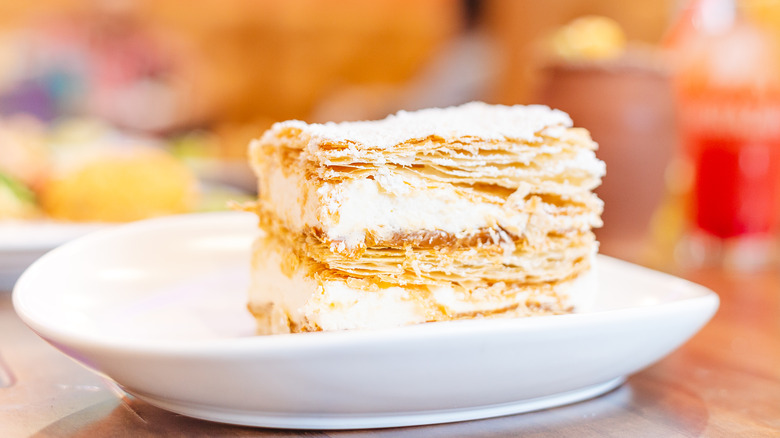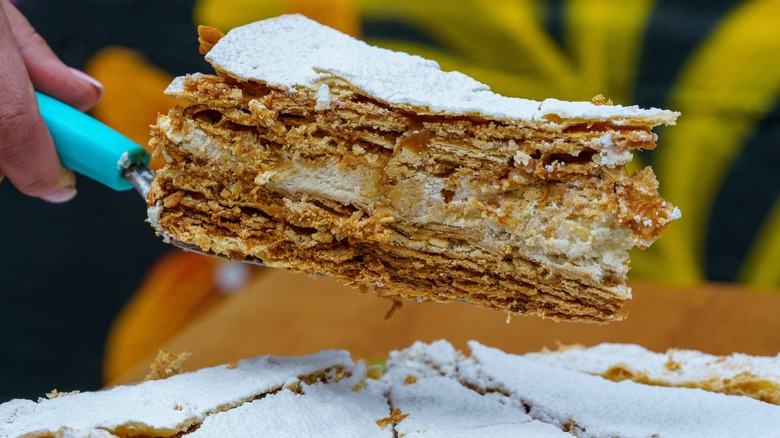The Luscious 'Thousand Layer' Cake Popular In Chile
Cuisine is one of the most varied (yet definitive) aspects of all the unique cultures around the world — but pretty much every culture has a trademark extravagant dessert. Take the French mille-crepe, for instance. "Gâteau Mille-Crêpes" means "Thousand Crêpe Cake," says PBS, and the dessert consists of around 20 thin crepes spread with maple-scotch pastry cream stacked on top of each other. Then, the whole thing is covered in a thin layer of caramelized sugar. (Not unlike the other French dessert croquembouche.)
Stacked desserts are a common theme across global confectionery stylings. Greek, Turkish, and Middle Eastern cuisines all make different versions of baklava, with its thin layers of crispy phyllo dough spread with butter, honey, and chopped nuts. It's disputed whether baklava has Arabian, Persian, Lebanese, or Armenian origins, but whatever the case, folks have been enjoying it since the 8th century B.C.E.
When you think of classic Chilean food, dishes like empanadas, ceviche, or sopaipilla might come to mind. But today, we're talking about a stacked dessert that's popular in Chile. Introducing torta de mil hojas: the luscious "thousand layer" cake.
Good things come in layers
Per Serious Eats, in torta de mil hojas (the "thousand layer" or "thousand sheets" cake), translucent-thin sheets of pastry dough are smeared with "manjar" (aka dulce de leche) and stacked. The process is repeated 10-15 times until the mil hojas has reached a significant height and the entire thing is covered in a thick layer of frosting. Manjar is particularly popular in the desserts of Chile, Uruguay, Argentina, Colombia, and Peru, says Martha Stewart. "Dulce de leche" is Spanish for "sweet from milk," a fitting name considering the thick, gooey spread is made by slow-simmering whole milk and sugar.
According to Chilean Food & Garden, some recipes for torta de mil hojas (colloquially shortened to "milhoja") call for chopped walnuts to be sprinkled into each layer, as well. The outlet says some bakers substitute manjar for plum or rhubarb jam for a less sweet variation. In fact, the cake significantly differs from one home baker to the next. Some garnish the outside with chopped nuts; others use sugar sprinkles. Some recipes even incorporate Chilean pisco into their manjar. Pisco is a high-proof spirit made from distilled grapes grown in the Atacama and Coquimbo regions, explains Chile Spirits. The Chilean delicacy is fermented into an amber color (similar processing to Brandy) and enjoyed throughout South America. If you want to give torta de mil hojas a try for yourself, it keeps in the fridge for up to a week.

